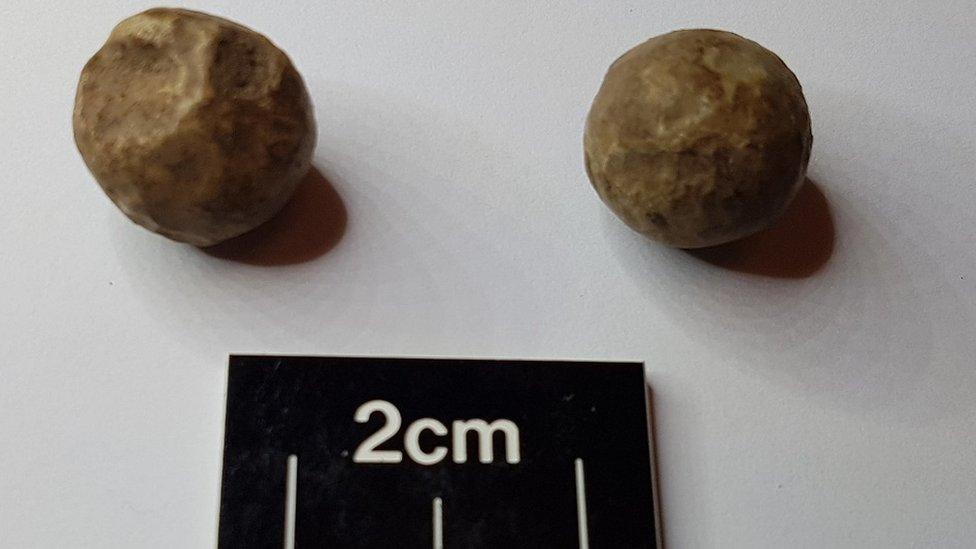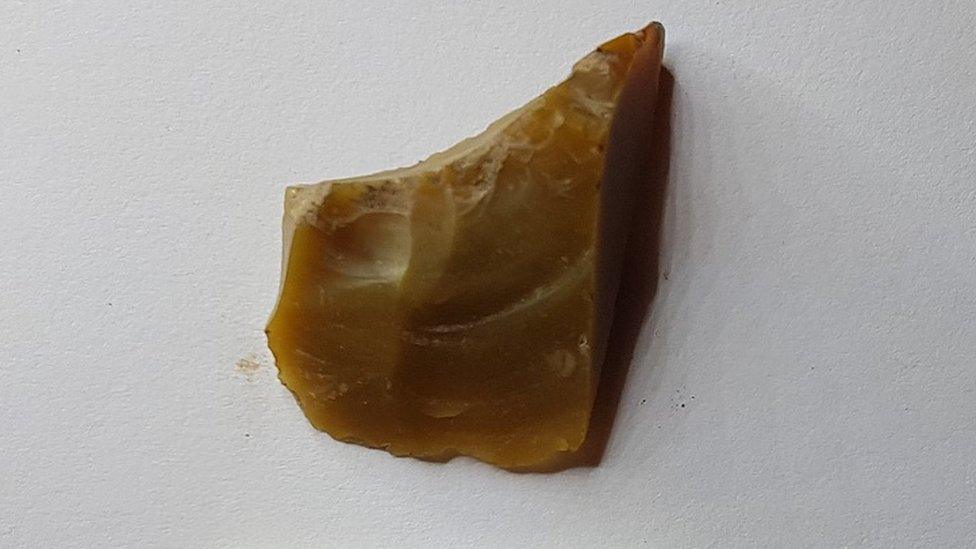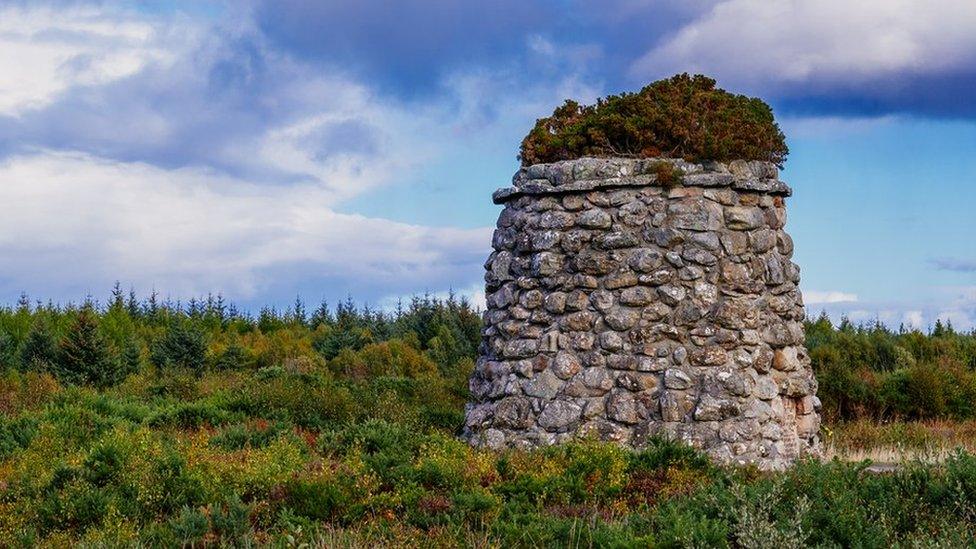Musket balls unearthed in digs at Culloden Battlefield
- Published

Two musket balls were found in the digs at Culloden, with the one on the left showing signs of impact
Two lead musket balls - one showing signs of impact - are among finds made in new archaeological digs at Culloden Battlefield.
The battle saw the defeat of Bonnie Prince Charlie's Jacobite forces by the Duke of Cumberland's government army.
The digs were near to where a second line of British government troops lined up on 16 April 1746.
Archaeologists said the musket balls may have passed through or over the first line of government troops.

A fragment of clay pipe found during the digs
Derek Alexander, head of archaeological services for the National Trust for Scotland (NTS), said the low concentration of lead shot found during the digs may be the result of most Jacobite musket and pistol volleys hitting a regiment in the first line, with only occasional shots reaching further back.
Two horseshoes also found may relate to agricultural activity, or were lost by horses in the government cavalry, dragoons or artillery as they manoeuvred around the battlefield.
The archaeology team said the small size of the horseshoes might indicate they are more likely to be from the battle, than farm work. The team is working to date the finds.
Small fragments of clay tobacco pipes, including part of a bowl with a stamp that shows it was made in London, were also found along with a single flake of flint from the late Neolithic or Early Bronze Age.

A fragment of prehistoric flint
About 30 people took part in the dig - half were archaeology volunteers with the National Trust for Scotland and the other half were staff and volunteers from Culloden.
Culloden saw the deaths of about 1,600 men - 1,500 of them Jacobites.
The battle ended Prince Charles Edward Stuart's campaign to regain the Great British throne for his father.
The prince escaped from the battlefield, which is near Inverness, and died in Rome in 1788.
Archaeologists have examined the moorland battle site on the outskirts of Inverness before.
In recent years detailed investigations with metal detecting and geophysical survey work have taken place in an area known as the Field of the English, with trial trenching around Old Leanach Cottage, both close to the position of the government first line.
Related topics
- Published28 October 2021
